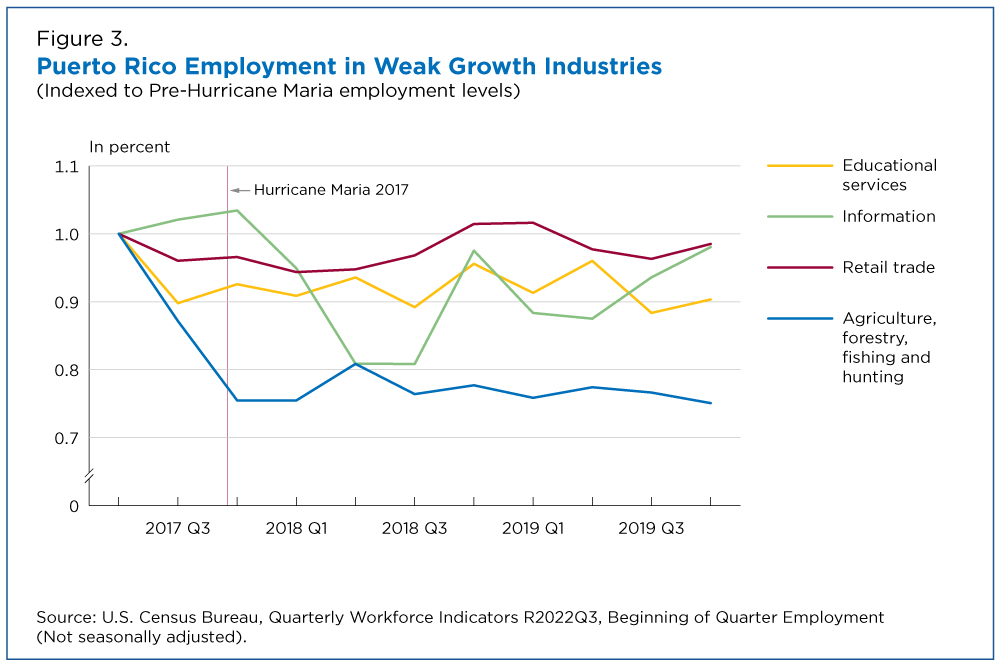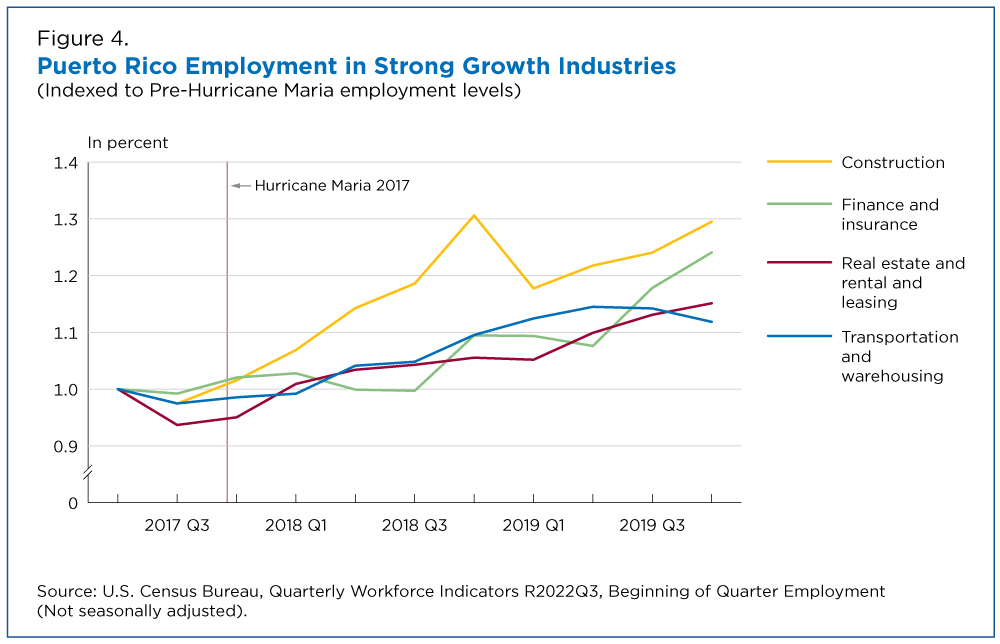First Quarterly Workforce Indicators for Puerto Rico Provide Demographic Portrait of Island’s Employment Trends
The youngest and oldest workers drove Puerto Rico’s employment recovery after Hurricane Maria devastated the island five years ago.
Today, the U.S. Census Bureau released the first Quarterly Workforce Indicators (QWI) for Puerto Rico, providing rich demographic profiles of the island’s employment.
Total employment reached its lowest point (633,289) in the first quarter of 2018 but recovered by the end of 2019, when there were 694,592 people employed.
After Hurricane Maria hit Puerto Rico in September 2017, there was an increase in net outmigration and sharp decline in private-sector employment. Both trends were partly reversed the following year.
While the data released today cannot measure the current state of employment in Puerto Rico, the inclusion of Puerto Rico in the QWI will help assess the employment impacts of Hurricane Fiona, which struck the island last week.
Employment After Hurricane Maria
Total employment reached its lowest point (633,289) in the first quarter of 2018 but recovered by the end of 2019, when there were 694,592 people employed (Figure 1). That was a 5.3% increase from pre-hurricane employment: 35,213 fewer people were employed in the second quarter of 2017.
This research looks at the recovery through 2019, before the COVID-19 pandemic affected employment across the nation.
Employment Recovery by Worker Age
The recovery in employment levels was largely driven by the youngest and oldest workers.
By the end of 2019, employment for workers ages 24 and younger, and those ages 45 and up, more than recovered from pre-Maria levels, increasing 10% (Figure 2).
Employment numbers for workers ages 25-44 remained below pre-hurricane levels for most of this period. They eventually recovered by the end of 2019 to their original levels.
In short, the net employment gain of 35,213 between the second quarter of 2017 and the fourth quarter of 2019 was largely due to gains in employment in the youngest and oldest age groups: 21% of net employment gains can be attributed to younger workers and 73% to older workers.
Employment Recovery by Industry
The employment recovery was uneven across industries. Among the industries with weak growth during this period: the agriculture sector, which contracted sharply after Maria and had not recovered by the end of 2019. Employment in this sector was down 20% from pre-hurricane levels (Figure 3).
In contrast, the Construction, Real Estate, Transportation and Finance industries showed strong employment growth in the aftermath of Maria.
These industries did not experience even short-term slowdowns and by the end of 2019, employment in them had grown by at least 10% (Figure 4).
These four industries accounted for 46% of the total employment gain during this period and experienced sharp increases in the number of younger and older workers. The number of young workers in construction almost doubled during this period (Figure 5).
Finance and real estate industries experienced similar increases in the number of young and older workers (Figure 6).
About the data
All tabulations in this story are available on the QWI landing page (Puerto Rico experimental release) .
QWI-PR will be continuously updated and expects to release data for 2021 quarters later this year. In the coming years, the Census Bureau is evaluating an expansion of the set of statistics released by QWI-PR, which could include outcomes by educational attainment of workers.
To learn more about QWI or get answers to specific questions, email CES.QWI.Feedback@census.gov.
Related Statistics
Stats for Stories
Stats for Stories
Subscribe
Our email newsletter is sent out on the day we publish a story. Get an alert directly in your inbox to read, share and blog about our newest stories.
Contact our Public Information Office for media inquiries or interviews.












